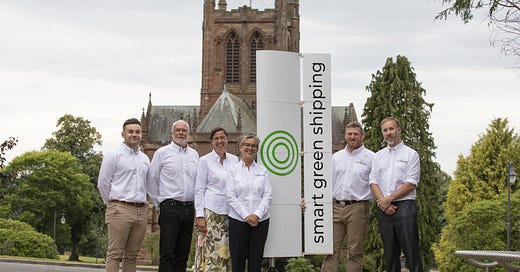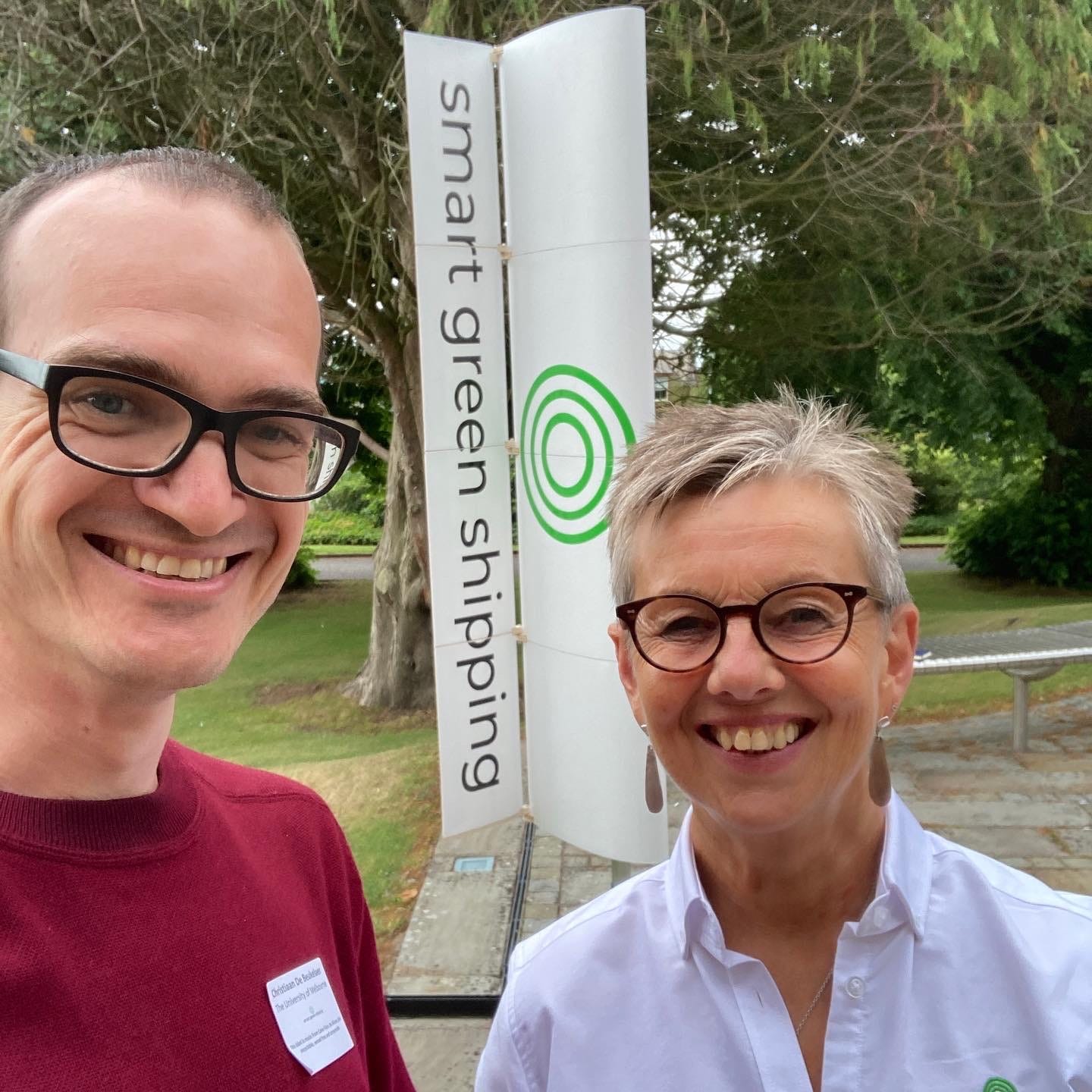On the 28th of July, I made my way to the southern Scottish city of Dumfries – home of Robert Burns – for an event hosted by Smart Green Shipping, Di Gilpin’s company that promises to rethink and transform the future of the maritime shipping industry. It’s not the first time she’s taking on a challenge. She sold mobile telephony before the world was ready. In Formula One racing she embraced seemingly outlandish ideas to stay ahead of the pack.

Easterbrook Hall, where the event took place, was opened in 1839 as part of the Crichton Institution for Lunatics, because its founder and benefactor Elizabeth Crichton of Friars Carse was not able to establish a university in Dumfries.
Back then, in the 19th century, ships propelled solely by the force of the winds were still part and parcel to the global economy. Tea clippers like the 1869 Cutty Sark were swift and effective. In 1859, the Flying Cloud, built to sail as quickly as possible from New York to San Francisco via Cape Horn during the Gold Rush, managed to clock 992 nautical miles in three consecutive days, an average speed of nearly fourteen knots. On that voyage, she set the record for this passage, arriving after 89 days and 21 hours. The Flying Cloud broke her own record in 1854, and kept it until beaten in 1989, over a century later, by Thursday's Child. This was the height of sail technology.
The availability of cheap coal and oil, as well as the opening of the Suez Canal in 1869 – where ships were not allowed to operate under sail – changed all that. Considering this was also the year the Cutty Sark launched, one can only imagine how technology for cargo transport under sail would have evolved in the intervening 150 years.
In the meantime, recreation and competitive sailing made significant strides. This includes Joshua Slocum’s first solo circumnavigation of the planet, Robin Knox-Johnston’s first non-stop circumnavigation, and Ellen MacArthur’s breaking the non-stop around the world record in 2005. It was her time at sea that inspired her to change tack from competitive sailing to help build a circular economy. Also beyond these daring ventures, technology and engineering changed enormously since the heyday of sail.
Today, there is a real push to connect the potential of wind propulsion to the ongoing efforts to build a global circular economy. Smart Green Shipping is one of the companies involved in the effort. Bearing this in mind, it's hardly surprising that Eleanor Creesy, who navigated the Flying Cloud in the 19th century, has long been an inspiration to Di Gilpin.
Less than a decade ago, anyone proposing to put sails back on merchant marine vessels was met with scorn and laughter. Many shipping executives considered the use of wind so outlandish that Di Gilpin might as well have been relegated to the Crichton Institution for Lunatics. It’s difficult to fathom that wind propulsion for ships, a simple principle that served humanity well for thousands of years, seemed unimaginable as a solution for the present climate emergency for so long. Indeed, the B9 ship design, which Gilpin worked on over a decade ago, has not yet been built. Neither have most of the other modern wind ships that have been designed in the last fifteen years.
Luckily for the industry, and Scotland, Gilpin’s work with Smart Green Shipping is now recognised as a realistic and promising venture that can help to both decarbonise shipping and re-invigorate the long-standing history of Scottish shipbuilding. The Crichton Trust is not just a part of history, it is now a remote campus for several Scottish universities, where companies, government, and academics work together to ensure that the climate emergency becomes a climate opportunity for the future, rather than a cliff we’re about to drop off from – to Martin Valenti’s words. Vincent was present at the event both as the director for net-zero at South of Scotland Enterprise and the MC of the event.
At the end of the Q&A, David Thomson of the Annandale Distillery in Annan, asked a simple question, pointing at the dummy of Smart Green Shipping’s FastRig that stood on the podium: “How does it work exactly?”
Smart Green Shipping combines FastRigs – from Fully Automated Sail Technology – with its Trade Wind software that helps crews make operational choices based on advanced modelling and live weather data. In doing so, sailing ships will once again serve the global trading system.
The future of shipping is undergoing very rapid shifts now. Both the climate crisis, the pandemic, and geopolitical conflict are shifting the How we ship, what we ship, and where we ship.
If the energy in the room was anything to go by, Scotland will be one of the key regions leading the charge in making this transformation happen. The will and expertise is certainly there.
Even so, Thomson had a point. Despite many presentations and lavish praise for Gilpin and her company, no one really explained in any detail how Smart Green Shipping system would work, technologically and operationally, within the existing shipping industry.
Wind propulsion remains a no-brainer, as neither the basic physics of sailing (a differential in wind pressure around the sails creating a lift that can propels a vessel) nor the cost of sail (it is still free, after all those years) have changed. However, the scale and complexity of the global economy has changed immensely since the 19th century. And so has the shipping industry.
For the wind to change that, we’ll need more than just technology and motivation. The time for decisive action is now – let the wind bring change!




